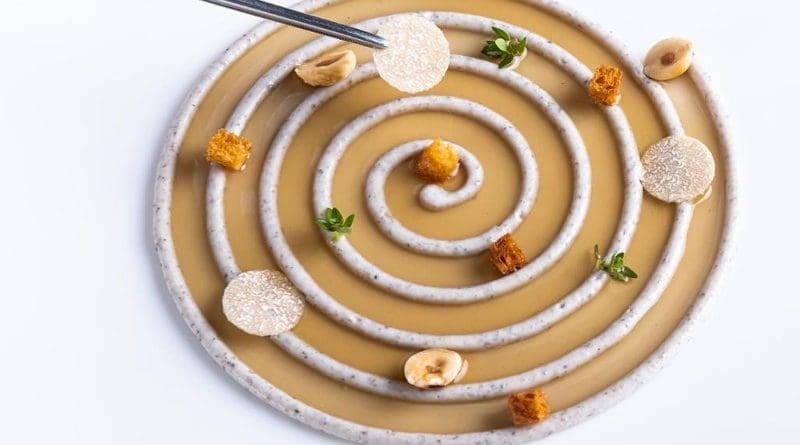Innovative 3D Food Printer Cuts Food Waste And Boosts Creativity In Kitchen
Barcelona-based Natural Machines developed the first kitchen appliance based on 3D printing technology, called Foodini. The Michelin-starred brothers of Cocina Hermanos Torres introduced the 3D food printer in their kitchen to prepare creative dishes that would be impossible to do by hand.
It’s also in alignment with the restaurant’s sustainable processes, demonstrated by creating a zero-waste dish with the help of the 3D food printer. Not only restaurants but also home kitchen users could benefit from the technology soon. The latest FutureKichen video features Hermanos Torres’ use of Foodini. Funded by EIT Food, the FutureKitchen video series ‘infotains’ (entertain and informs) about food technology.
Creative meal designs and zero waste cooking
After contributing to develop Foodini with Natural Machines, today the Hermanos Torres chefs, Javier and Sergio 3D print around 100 dishes per day. They prepare the food for printing, put it into the Foodini capsules and print their desired shapes. Foodini is a WiFi IoT (Internet of Things) connected kitchen appliance and includes an app with pre-loaded designs. Customers can also design their own creations, save them and print again. Hermanos Torres appreciate that the 3D device allows them to design visually appealing meals that would be impossible to create by hand.
The machine helps them cook in a sustainable way: “Zero waste cooking is a fundamental part of our kitchen.” said Sergio Torres.“We use all the parts of the food which gives us new opportunities in terms of taste and texture. For example, from a fish we even use the skin, the bones and obviously, the meat”, adds his brother Javier Torres.
Future of food with Foodini
The 3D food printer is currently mostly used in professional kitchens, but Lynette Kucsma, Co-founder and CMO of Natural Machines sees it entering our homes, too: “We believe that in 10 to 15 years, 3D food printers will become a common kitchen appliance in both home and professional kitchens, similar to how an oven or a microwave are common appliances in kitchens today. The printer would enable people to become food manufacturers themselves.”
An estimated 20% of the total food produced is lost or wasted in the EU. Food technologies such as Foodini help tackle this problem. Instead of manufacturing in a central location and shipping out the final product, the mini-manufacturing kitchen appliance encourages to produce locally and customise the ingredients, e.g. using all food, including those with imperfect appearances. Food that is normally bought packaged can be printed in the amounts and shapes needed.
Foodini can also support users in preparing healthy food as they can determine the ingredients, such as the amount of salt or sugar.

